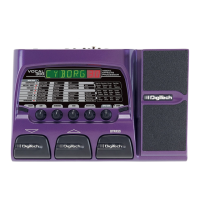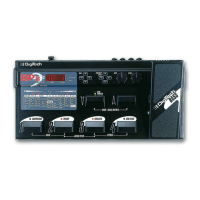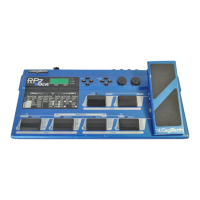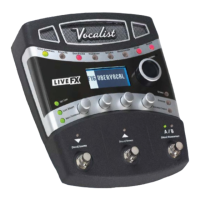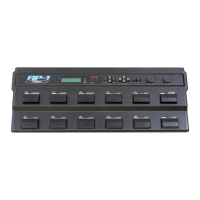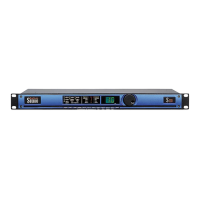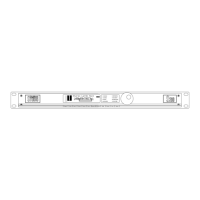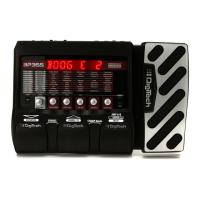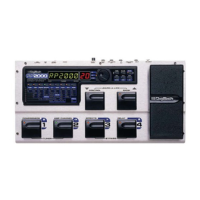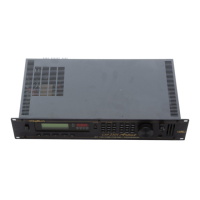Dmic+i - Dry Mic signal sent up USB 1. Dry Instrument signal sent up USB 2.
drymic - Dry Mic signal sent up USB 1. Nothing is sent up USB 2.
DRYlin - Dry Line Left signal is sent up USB 1. Dry Line Right signal is sent up USB 2. Stereo track gets
recorded.
DRYins - Dry Instrument signal is sent up USB 1. Nothing is sent up USB 2.
DRUMS - Vx400 drum playback is sent up USB 1. Nothing is sent up USB 2.
REmic - Playback from Pro Tracks™ is sent from the computer back through the Vx400’s effects
processing, and then sent back up USB 1 and 2 to be recorded. See Re-micing a Vocal Track
on page 28 for more information on how to use this setting.
USB 3-4 Source
USBOFF - USB 3 and 4 are disabled.
Dmic+i - Dry Mic signal is sent up USB 3. Dry Instrument signal is sent up USB 4.
drymic - Dry Mic signal is sent up USB 3. Nothing is sent up USB 4.
DRYlin - Dry Line Left signal is sent up USB 3. Dry Line Right is sent up USB 4.
DRYins - Dry Instrument signal is sent up USB 3. Nothing is sent up USB 4.
DRUMS - Vx400 Drum playback is sent up USB 3. Nothing is sent up USB 4.
The following diagrams show how signals are routed through the Vx400’s effects and out the USB port
for recording purposes:
Mic Signal Routing
The microphone signal is routed from the mic input through the Vx400s effects processing and then to
the pairs of outputs. The signal sent up USB can be tapped off either at the input (USB Send Path A),
or after the different Effects modules (USB Send Paths C or D). Signals recorded from USB Send
Path A can be played back later through the Vx400 for re-micing. See Re-Micing a Vocal Track on page 28
for more information on how this feature works.
Mic USB Source Mapping
The microphone signal has three paths in which it can travel up the USB port to the computer. Path A
taps the mic signal off right at the input and sends unprocessed signal up to the USB port. Path C taps
the mic signal after the Effects modules except the Delay and Reverb. Path D taps the mic signal at the
output of the Vx400 and can include any effects processing that may be used. Below is a matrix to show
where the signal is tapped based on how the Mic, USB 1-2 Source, and USB 3-4 Source settings are
configured.
Microphone Input
Mic
Model
Comp
Mic Pre
Voice
EQ
Noise
Gate
Effects
Delay Reverb
XLR Left Output
XLR Right Output
1/4" Left Output
1/4" Right Output
USB Dry
Send Path
A
USB Re-Mic
Return Path
B
USB Send
Path
C
USB Playback
Return Path
E
USB Send
Path
D
22
The Vx400 and Recording
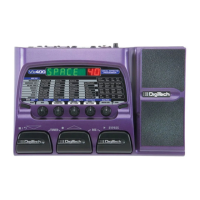
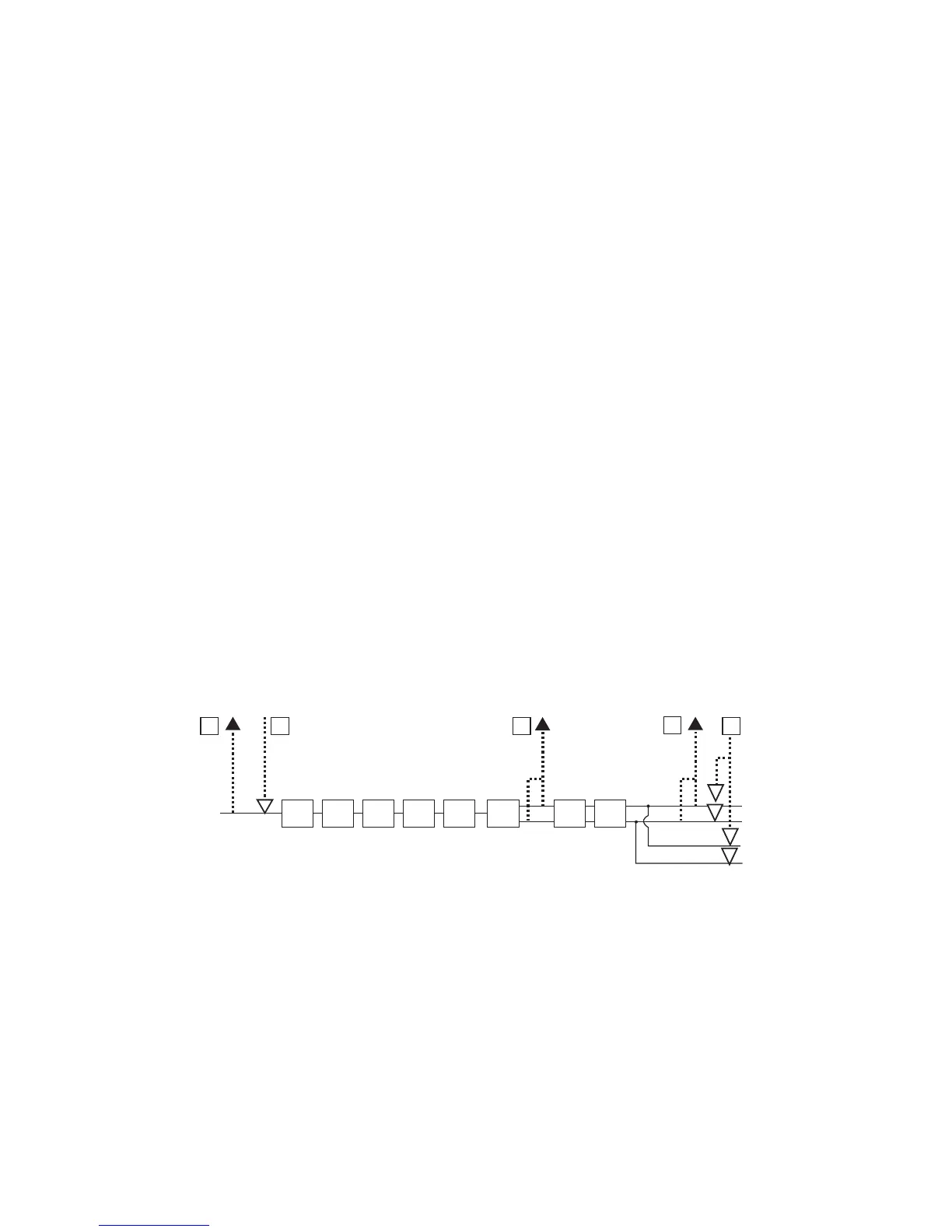